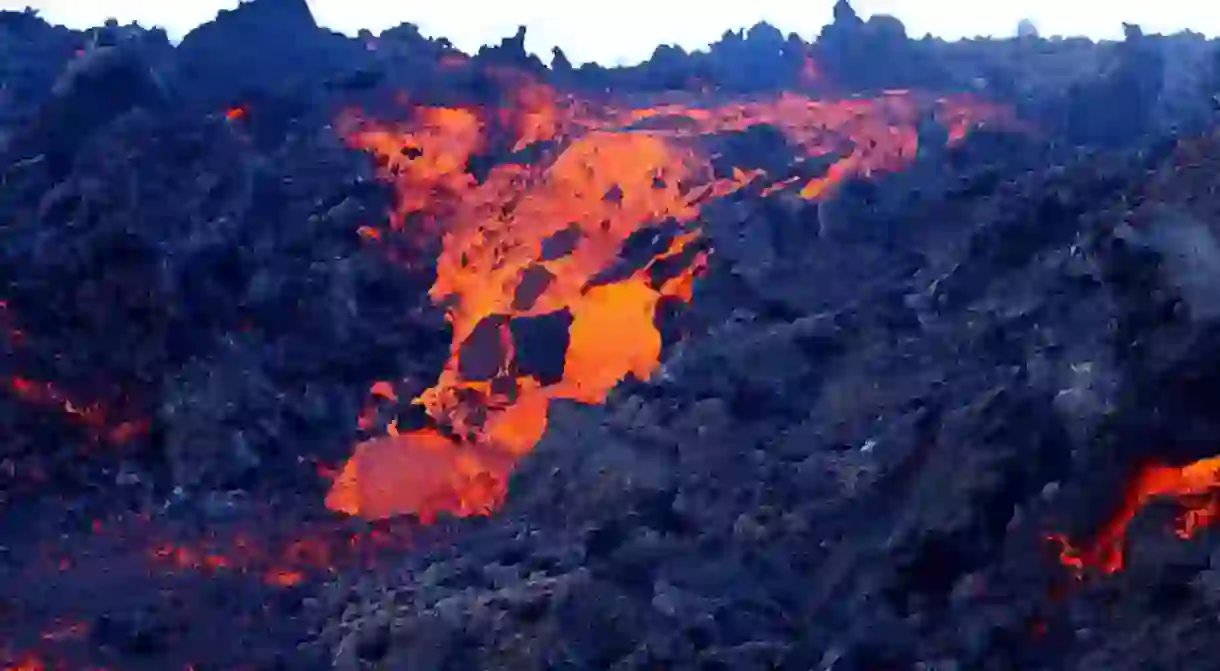Do You Recognize Iceland From These 19th Century Illustrations?

In 1867, the Irish-born American traveler, artist, writer, and government agent, John Ross Browne (1821-1875) traveled to Iceland and documented his journey with illustrations and descriptive text which was published as The Land of Thor (Harper & Brothers, 1867.) Already an accomplished travel writer, his descriptions of Iceland during a time when there were very few travelers from abroad give us a rare glimpse of this now popular tourist destination in the eyes of an outsider. Browne’s exclamations about the epic beauty of the Icelandic landscape make it obvious that the country still has the same lure more than one hundred years later.

“The weird, fire-blasted, and flood-scourged wilderness on all sides was as silent as death, save when we approached some dark lagoon and startled up the flocks of water-fowl that dwelt in its sedgy borders.” (Chapter XLVI: The Road to Thingvalla, 450.)

“Nothing could surpass the desolate grandeur of the coast as we approached the point of Reykjaness. It was an almost infernal blackness. The whole country seemed uptorn, rifted, shattered, and scattered about in a vast chaos of ruin. Huge cliffs of lava split down to their bases toppled over the surf. Rocks of every conceivable shape, scorched and blasted with fire, wrested from the main and hurled into the sea, battled with the waves, their black scraggy points piercing the mist like giant hands upthrown to smite or sink in a fierce death-struggle.” (Chapter XLII: The First Impressions of Iceland, 433.)

“The only stone building in Reykjavik of any importance is the “Cathedral;” so called, perhaps, more in honor of its great antiquity than anything imposing about its style or dimensions. At present it shows no indications of age, having been patched, plastered, and painted into quite a neat little church of modern appearance.” (Chapter XLIII: Reykjavik, The Capital of Iceland, 466.)

“In the course of our journey, we frequently overtook pack-trains laden with dried fish from the sea-shore. The main dependence of the people throughout the country, during the winter, is the fish caught during the summer. When dried it is done up in packs and fastened on each side of the horse… ” (Chapter XLVI: The Road to Thingvalla, 450.)

“It was a gray, gloomy morning when we sallied forth from the silent streets of Reykjavik. A chilly fog covered the country, and little more was to be seen than the jagged outline of the lava-hills, and the boggy sinks and morasses on either side of the trail.” (Chapter XLVI: The Road to Thingvalla, 450.)

“It would be difficult to conceive anything more impressive than this first view of the land of snow and fire. A low stretch of black boggy coast to the right; dark cliffs of lava in front; far in the background, range after range of bleak, snow-capped mountains, the fiery Jokuls dimly visible through drifting masses of fog; to the left a broken wall of red, black, and blue rocks, weird and surf-beaten, stretching as far as the eye could reach—this was Iceland!” (Chapter XLII: First Impressions of Iceland, 433.)

“And, in good truth, there it was, some hundreds of feet below, in a beautiful little green valley that lay at the bottom of the gap. Never had my eyes witnessed so strange and wild a sight. A great fissure in the earth nearly a hundred feet deep, walled up with prodigious fragments of lava, dark and perpendicular, the bases strewn with molten masses, scattered about in the strangest disorder… ” (XLVII: The Almanajau, 466.)

“It seemed very strange to be traveling in Iceland, actually plodding my way over deserts of lava, and breathing blasts of air fresh from the summit of Mount Hecla! I was at last in the land of the Sagas—the land of fire, and brimstone, and boiling fountains!—the land which, as a child, I had been accustomed to look upon as the ultima Thule, where men, and fish, and fire, and water were pitted against each other in everlasting strife.” (Chapter XLVI: The Road to Thingvalla, 450.)
Sources: J. Ross Browne, The Land of Thor, New York: Harper & Brothers, 1867.













